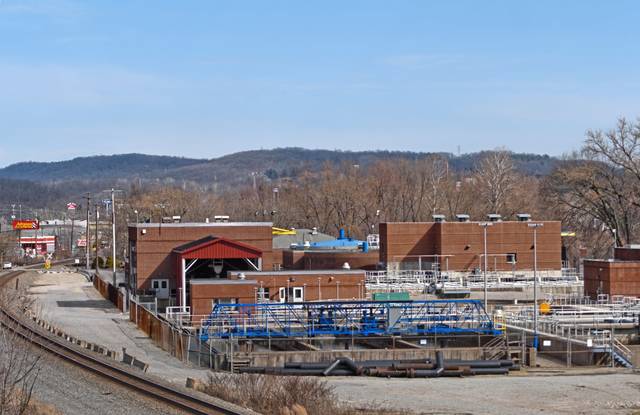https://triblive.com/local/valley-news-dispatch/lower-valleys-sanitary-authority-on-track-for-50-million-treatment-plant-expansion/
Lower Valley's sanitary authority on track for $50 million treatment plant expansion

The Allegheny Valley Joint Sewage Authority’s treatment plant expansion plans are not only on track, they are slightly ahead of schedule.
Authority officials said initial permitting has been approved by the state Department of Environmental Protection.
The electrical and structural plans are done, and a second round of permitting involving distribution plans will soon be submitted to the DEP.
The authority also continues to work with Norfolk Southern railroad to acquire easements for new pipes from Springdale to the treatment plant in Harmar. KLH Engineering is working to acquire new easements for the new system.
The authority plans to expand its sewage treatment capacity from the current 5.5 million gallons daily to 8 million gallons daily by 2023.
The cost of the project at its treatment plant in Harmar is expected to be between $50 million and $60 million.
The federal Environmental Protection Agency is mandating the treatment plant upgrade. It’s part of a nationwide effort to prevent raw sewage overflows and inadequately controlled stormwater that discharges into rivers, streams, lakes and other waterways.
The authority plans to pay for the expansion through a bond issue.
The plant expansion will also allow the authority to go from five pump stations to two. Authority Manager Tim Kephart said the reduction in pump stations “will result in major costs savings.”
The authority currently has two pump stations in Cheswick and Harmar and another in Springdale.
The pump stations date to 1980, and it is becoming difficult to get replacement parts when needed, according to officials.
The authority’s methane generator will also be shelved once the expansion concludes. The generator is also antiquated, and the new system will not produce enough gas to justify keeping the generator. The unit costs $15,000 yearly to operate, not counting repairs, and uses a gallon of specialized oil daily.
Copyright ©2025— Trib Total Media, LLC (TribLIVE.com)
